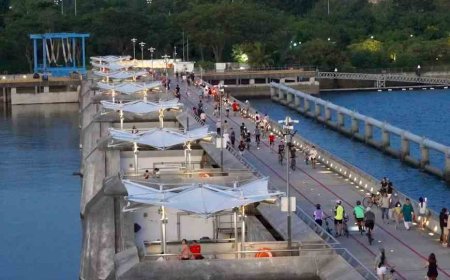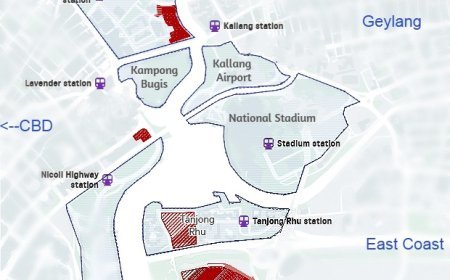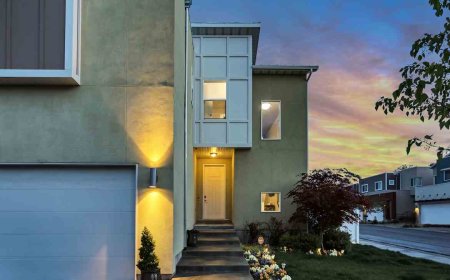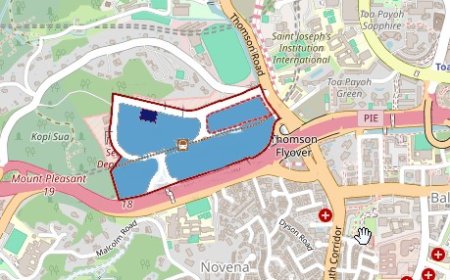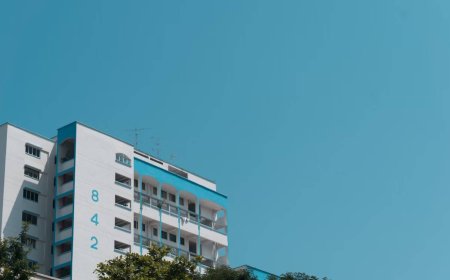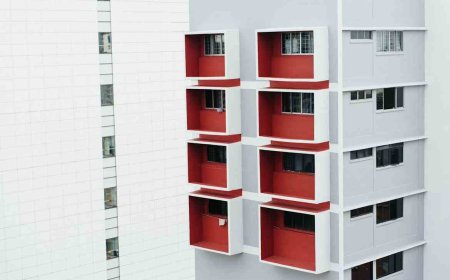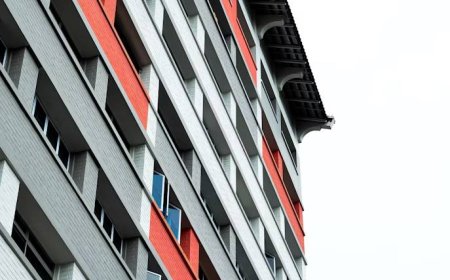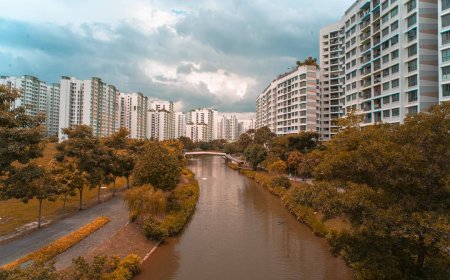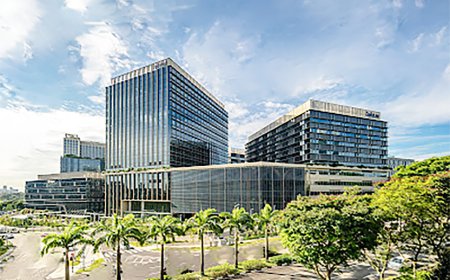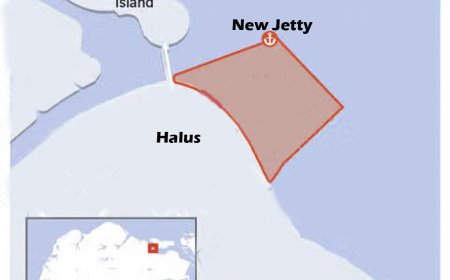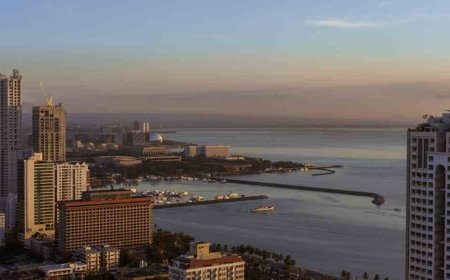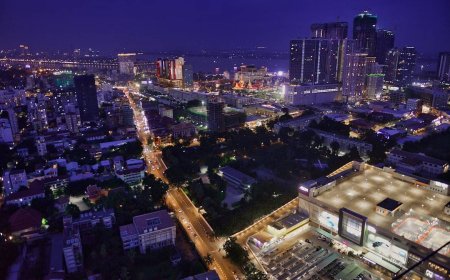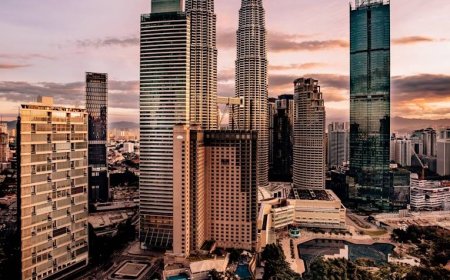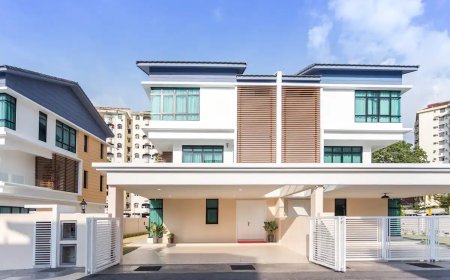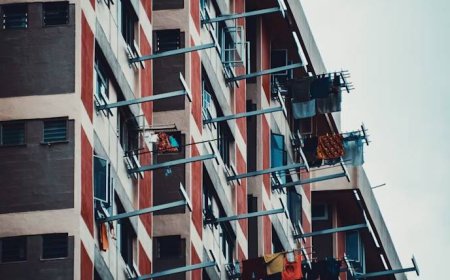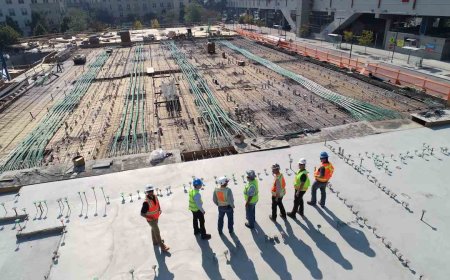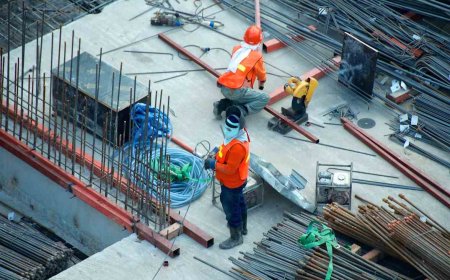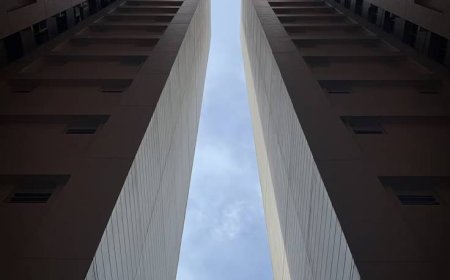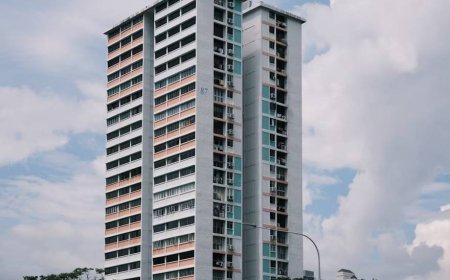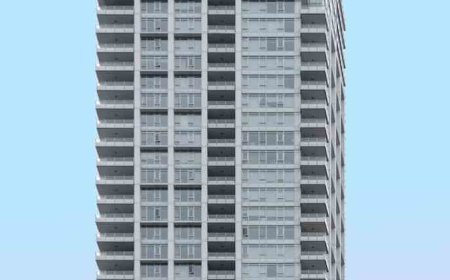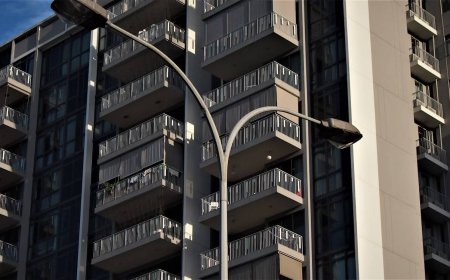Outlook for Singapore’s Private Residential Rents in 2025
Explore the outlook for Singapore’s private residential rents in 2025. Learn how market supply, landlord cost pressures, and unit types will influence rental trends, with expert analysis and practical advice.
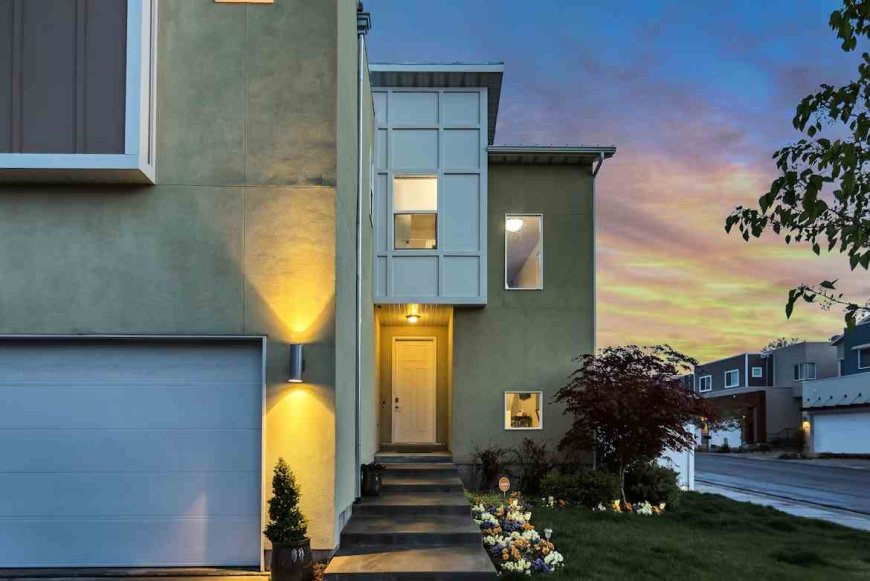
Singapore's private residential rental market is entering a year of cautious stability. While macroeconomic headwinds and an influx of new supply are shaping tenant decisions, rental rates are expected to remain broadly steady.
Market Overview & Key Drivers
Consumption & Cost Pressures
Global trade uncertainty, particularly U.S. tariffs, has introduced prudence into business and hiring decisions. Cost control, including managing office space and housing budgets, is now a significant theme for companies operating here.
Supply Expansion
A steady wave of new private flats entering the rental market offers tenants more options, often newer units at similar price points. At the same time, property taxes and rising maintenance charges incentivize landlords to maintain rents rather than accept low-ball offers.
Sub-segment Pressures
-
Small units (1–2BR) may face downward pressure due to heightened supply in that segment.
-
Large units (5BR) could also see softness, as tenants downsize to reduce rental costs.
Despite these shifts, overall rents are expected to remain flat year-on-year, with small variations by unit type and location.
Recent Market Dynamics
| Segment | Trend in 2025 |
|---|---|
| Q1 Rents | Private rents rose 0.4% quarter-on-quarter, 0.5% for non-landed units, 0.3% for landed. |
| Q2 Rents | Non-landed rents climbed 0.8% quarter-on-quarter, driven by strong performance in central areas, while small unit segments underperformed. |
| Future Outlook | Rents are expected to remain flat, backed by rental premiums for new, well-located units. |
Benefits for Stakeholders
Tenants
-
More variety in housing options, especially in newer developments.
-
Greater flexibility for negotiation, especially for larger units.
-
Predictable rental environment easing budgeting and planning.
Landlords
-
Stable rental income supported by cost pressures (taxes, conservancy fees).
-
Ability to hold firm on rent rather than lowering it prematurely.
-
Newly refurbished or premium units still command rent premiums.
3 Illustrative Scenarios
-
Newly Married Couple (Small Flat)
Their desired 1–2 bedroom apartment faces downward rent pressure. With ample newly completed units, they might negotiate a better rate or focus on slightly less central areas. -
Expat Tenant Downsizing
A tenant in a 5-bedroom flat may move to a 3–4 bedroom unit to manage budget, boosting demand for mid-sized units even as larger units soften. -
Investor with Prime Unit
Despite overall flat market conditions, an investor with a well-located, upgraded unit may still achieve modest rental gains due to ongoing premiums earned by newer or high-quality stock.
Key Takeaways
-
Early 2025 showed marginal rental increases, but prices have begun to stabilize.
-
New supply, especially of smaller units, is exerting downward pressure in certain segments.
-
Landlord cost pressures help maintain rental levels despite softened demand.
-
Rental performance may vary by unit type and location, with central and premium units performing more resiliently.
Comparison of Expected Rental Yields by District (2025)
| Market Segment | Key Districts | Typical Rental Yield (2025 Forecast) | Characteristics & Insights |
|---|---|---|---|
| Core Central Region (CCR) | Orchard, River Valley, Marina Bay, Sentosa | 2.5% – 3.0% | Premium locations with strong demand from expatriates and high-net-worth tenants. Yields are lower due to high purchase prices, but properties hold prestige and long-term capital appreciation potential. |
| Rest of Central Region (RCR) | Bishan, Queenstown, Toa Payoh, Novena, Geylang | 3.0% – 3.5% | Balanced mix of affordability and connectivity. Popular with both local professionals and expats seeking proximity to the city without CCR pricing. Expected to remain stable in 2025 with modest rental growth. |
| Outside Central Region (OCR) | Punggol, Woodlands, Tampines, Jurong, Sengkang | 3.5% – 4.0% | Higher yields due to lower entry prices. Attractive to families, young couples, and tenants working in nearby business hubs (e.g., Jurong Lake District, Tampines Regional Centre). However, rent growth is slower compared to central areas. |
Tenant Profiles and Preferred Rental Choices in 2025
| Tenant Type | Typical Locations | Preferred Unit Size | Budget Range (Monthly) | Key Considerations |
|---|---|---|---|---|
| Expatriates (Corporate Leases) | CCR (Orchard, River Valley, Marina Bay, Novena) | 2–4 Bedroom Apartments, Luxury Condos | SGD 7,000 – 15,000+ | Close to international schools, central offices, lifestyle amenities, prestige factor. |
| Young Couples / Singles | RCR (Queenstown, Paya Lebar, Tiong Bahru, Katong) and OCR (Punggol, Tampines) | 1–2 Bedroom Apartments | SGD 2,500 – 4,500 | Connectivity to MRT, affordability, proximity to lifestyle hubs, newer unit preferences. |
| Families with Children | RCR (Bishan, Toa Payoh, Marine Parade) and OCR (Jurong, Woodlands, Sengkang, Pasir Ris) | 3–4 Bedroom Apartments or Landed Homes | SGD 3,500 – 7,500 | Space, access to schools, family-friendly amenities, nearby parks. |
| Budget-Conscious Tenants (Local / Regional Workers) | OCR (Yishun, Hougang, Choa Chu Kang, Woodlands) | 2–3 Bedroom Apartments | SGD 2,000 – 3,500 | Value for money, proximity to workplaces, transport accessibility, lower overall cost. |
Observations
-
Expatriates still dominate demand in the CCR, keeping premium units resilient even in a flat rental market.
-
Young couples are gravitating toward RCR/OCR new launches, leveraging downward rental pressure on smaller units.
-
Families often prefer RCR for balance between price and city access, or OCR for bigger spaces at affordable rents.
-
Budget tenants create stable demand in OCR towns, supporting yield resilience for landlords in non-central locations.
Investor Tip
If you are focused on yield, OCR developments near transport hubs or business parks offer the best returns. For those prioritizing capital appreciation and tenant stability, CCR and RCR units provide stronger long-term positioning.
District-by-District Rental Outlook for 2025
Core Central Region (CCR)
-
Districts: 9 (Orchard, River Valley), 10 (Bukit Timah, Holland), 11 (Newton, Novena), Downtown Core, Marina Bay, Sentosa.
-
Outlook:
-
Rental demand remains steady from expatriates and high-income professionals.
-
New luxury completions add supply, but strong international demand and limited land space cushion prices.
-
Yields remain modest (2.5% – 3.0%), but stability and prestige keep rents resilient.
-
Rest of Central Region (RCR)
-
Districts: 3 (Queenstown, Tiong Bahru), 5 (Buona Vista, Pasir Panjang), 13 (Potong Pasir, MacPherson), 14 (Paya Lebar, Geylang), 15 (Katong, Marine Parade).
-
Outlook:
-
Popular with both locals and expatriates who want city-fringe convenience at lower costs than CCR.
-
Areas near MRT lines and integrated hubs (e.g., Paya Lebar Quarter, Novena Health City) see consistent demand.
-
Rental yields average 3.0% – 3.5%. Mid-sized units are especially attractive for families downsizing from larger homes.
-
Outside Central Region (OCR)
-
Districts: 16–28 (Tampines, Pasir Ris, Jurong, Punggol, Woodlands, Yishun, Sengkang).
-
Outlook:
-
Highest yields (3.5% – 4.0%) due to lower entry prices.
-
Strong demand from families and local tenants working in decentralised business hubs like Jurong Lake District, Tampines Regional Centre, and Woodlands Regional Hub.
-
New BTO projects and condo completions in towns such as Punggol and Sengkang will add supply, softening rents for smaller units.
-
Key Takeaways from Regional Outlook
-
CCR: Stable, prestige-driven, low-yield but resilient.
-
RCR: Best balance of yield and growth, strong tenant mix.
-
OCR: High yields, budget-friendly, but more vulnerable to oversupply.
Frequently Asked Questions (15)
-
Will private residential rents fall in 2025?
No, most forecasts indicate rents will stay flat compared to 2024. -
Why aren’t rents decreasing if demand softens?
Because higher property taxes and conservancy charges mean landlords are less likely to reduce asking rents. -
Which unit types are most affected by rental pressure?
One- and two-bedroom units, as well as large five-bedroom units, face more downward pressure. -
Which areas still see rental growth?
Core central regions continue to show modest growth due to premium demand. -
How did rents perform in Q1 2025?
Non-landed rents rose by about 0.5% quarter-on-quarter, indicating stabilization. -
How about Q2 2025?
Q2 saw 0.8% quarter-on-quarter growth, particularly in central areas; small unit types lagged. -
Are landlords likely to lower rents?
Generally not, due to rising cost burdens. -
Is there tenant demand in smaller units?
Demand exists but competition among landlords may push rental prices down. -
Could rental prices spike later in 2025?
Only if macro uncertainty decreases sharply and supply tightens unexpectedly. -
What about landed homes?
They’ve also seen marginal rental gains of around 0.3% quarter-on-quarter. -
Will new developments hold rental premiums?
Yes, newer units with upgraded features continue to attract tenants at higher rents. -
Are expatriate tenants still renting?
Yes, though uncertainty in hiring may temper demand. -
Should tenants wait for cheaper rents?
Not necessarily, options remain limited and good units will be snapped up quickly. -
Are there differences between public and private rental trends?
Yes, HDB rentals may face separate dynamics, often with different demand drivers. -
What’s the overall tone for landlords and tenants?
It’s balanced: stable and predictable but not without challenges or opportunities based on unit type and location.
Algene Toh
Disclaimer: The information presented on BSR2.com is intended for general informational purposes only. It does not constitute legal, financial, investment, or real estate advice and should not be relied upon as such. While every effort has been made to ensure the accuracy, reliability, and completeness of the content at the time of publication, all data is derived from publicly available sources and may be subject to change without notice. BSR2.com makes no representations or warranties of any kind, express or implied, regarding the suitability, timeliness, or accuracy of the information provided for any specific purpose. Users are strongly encouraged to seek independent advice from qualified professionals before making any decisions based on the content found on this website. BSR2.com shall not be held liable for any loss, damage, or consequence, whether direct or indirect, arising from the use of or reliance on the information provided. The content is intended as a general guide and does not take into account individual circumstances.
What's Your Reaction?
 Like
0
Like
0
 Dislike
0
Dislike
0
 Love
0
Love
0
 Funny
0
Funny
0
 Angry
0
Angry
0
 Sad
0
Sad
0
 Wow
0
Wow
0
